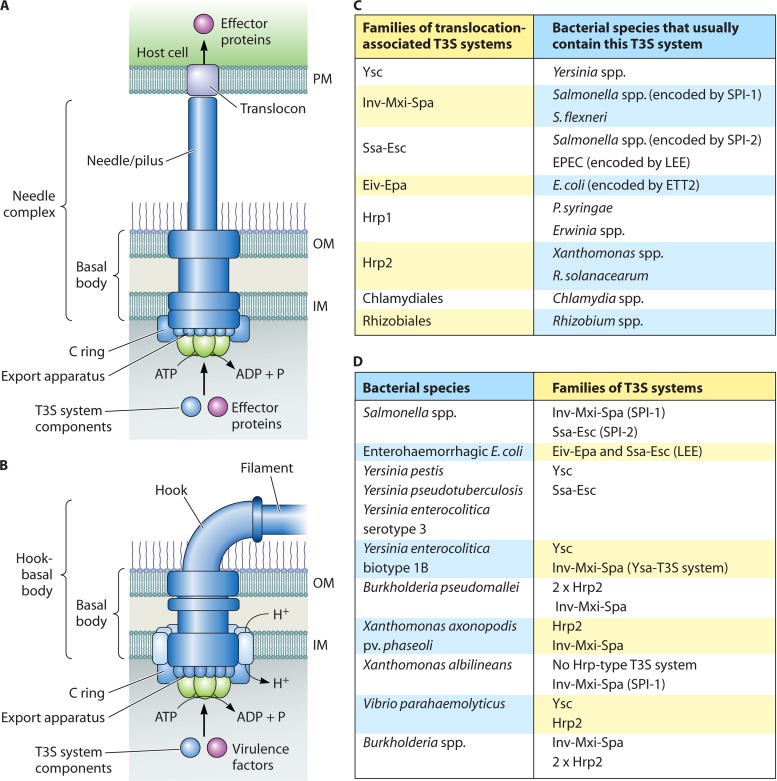Fig 1.
Overview of translocation-associated and flagellar T3S systems from animal- and plant-pathogenic bacteria. (A) Model of the translocation-associated T3S system. The basal body of the T3S system spans the bacterial IM and OM and consists of ring structures that are presumably connected by a periplasmic rod. The basal body is associated via an extracellular needle (animal-pathogenic bacteria) or pilus (plant-pathogenic bacteria) with a channel-like translocon in the host plasma membrane. The basal body and the needle from animal-pathogenic bacteria are referred to as the needle complex. The energy for the docking and unfolding of T3S substrates, including extracellular components of the T3S system and effector proteins, is probably provided by a cytoplasmic ATPase (shown in green) associated with the T3S system. Note that the cytoplasmic C ring is predicted only for translocation-associated T3S systems. A more detailed representation of single components of translocation-associated T3S systems is given in Fig. 2. (B) Model of the flagellar T3S system. The flagellar basal body is associated via an extracellular hook with the flagellar filament, which is 10 to 20 μm long and is the main bacterial motility organelle. The basal body is surrounded by 8 to 11 stator complexes that drive flagellar rotation and contain proton-conducting channels. The flagellar basal body and the hook are referred to as the hook-basal body. A detailed description of individual components of the flagellar T3S systems is provided in Fig. 3. (C) Summary of different families of translocation-associated T3S systems from bacterial pathogens and symbionts of plants or animals. The SPI-1-like Eiv-Epa T3S system encoded by the ETT2 gene cluster from E. coli is active in only a few strains. Note that P. syringae strains belonging to the phylogenetic subgroup 2c appear to encode an unusual T3S system that is only distantly related to the Hrp1-type T3S system (97). (D) Examples of bacterial species that possess more than one translocation-associated T3S system. Please note that most species contain an additional flagellar T3S system that is not listed in this table.

